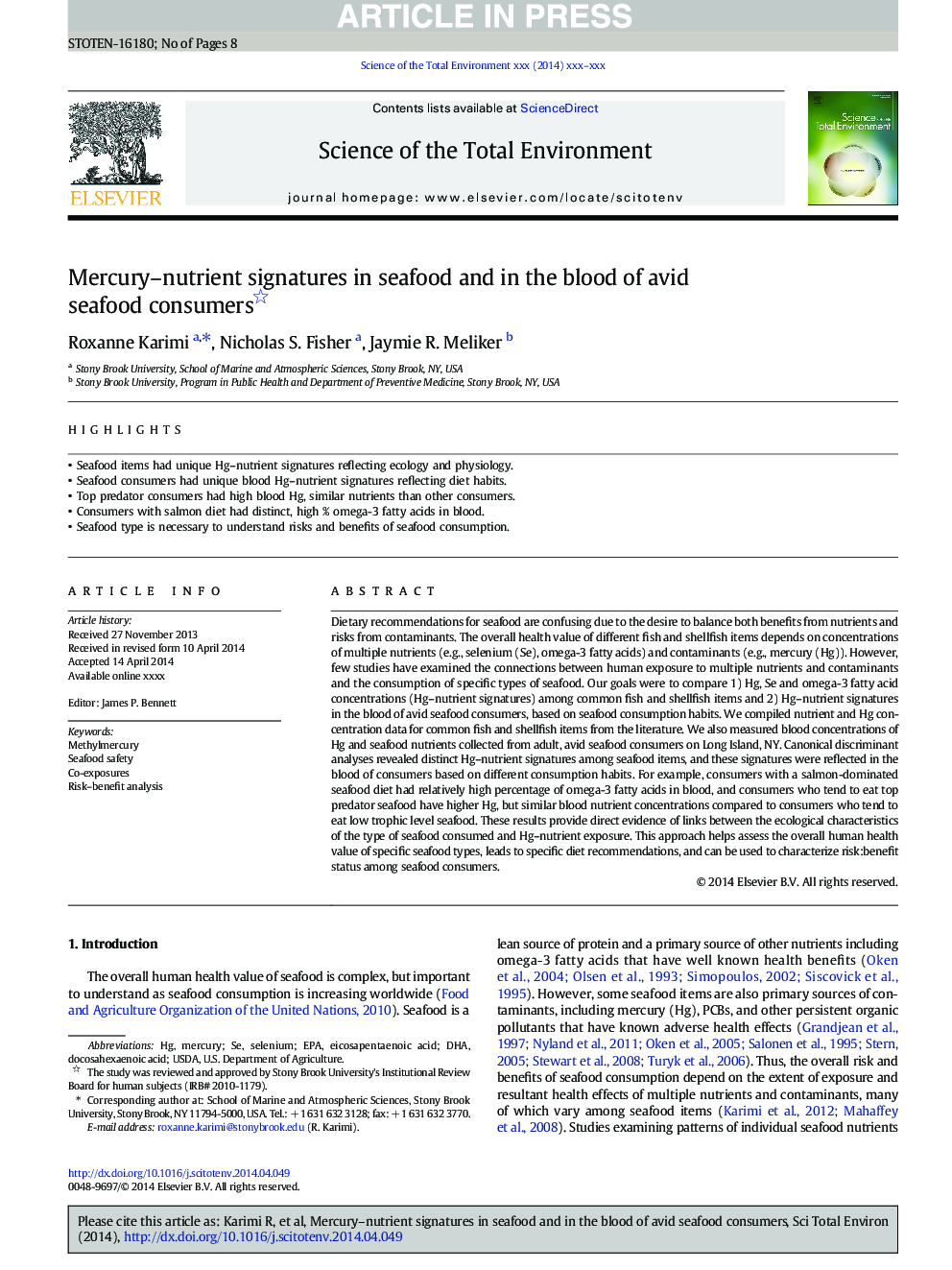| کد مقاله | کد نشریه | سال انتشار | مقاله انگلیسی | نسخه تمام متن |
|---|---|---|---|---|
| 6329531 | 1619776 | 2014 | 8 صفحه PDF | دانلود رایگان |
عنوان انگلیسی مقاله ISI
Mercury-nutrient signatures in seafood and in the blood of avid seafood consumers
ترجمه فارسی عنوان
امضاهای جیوه مواد مغذی در غذاهای دریایی و در خون مصرفکنندگان دریای خزدار
دانلود مقاله + سفارش ترجمه
دانلود مقاله ISI انگلیسی
رایگان برای ایرانیان
کلمات کلیدی
موضوعات مرتبط
علوم زیستی و بیوفناوری
علوم محیط زیست
شیمی زیست محیطی
چکیده انگلیسی
Dietary recommendations for seafood are confusing due to the desire to balance both benefits from nutrients and risks from contaminants. The overall health value of different fish and shellfish items depends on concentrations of multiple nutrients (e.g., selenium (Se), omega-3 fatty acids) and contaminants (e.g., mercury (Hg)). However, few studies have examined the connections between human exposure to multiple nutrients and contaminants and the consumption of specific types of seafood. Our goals were to compare 1) Hg, Se and omega-3 fatty acid concentrations (Hg-nutrient signatures) among common fish and shellfish items and 2) Hg-nutrient signatures in the blood of avid seafood consumers, based on seafood consumption habits. We compiled nutrient and Hg concentration data for common fish and shellfish items from the literature. We also measured blood concentrations of Hg and seafood nutrients collected from adult, avid seafood consumers on Long Island, NY. Canonical discriminant analyses revealed distinct Hg-nutrient signatures among seafood items, and these signatures were reflected in the blood of consumers based on different consumption habits. For example, consumers with a salmon-dominated seafood diet had relatively high percentage of omega-3 fatty acids in blood, and consumers who tend to eat top predator seafood have higher Hg, but similar blood nutrient concentrations compared to consumers who tend to eat low trophic level seafood. These results provide direct evidence of links between the ecological characteristics of the type of seafood consumed and Hg-nutrient exposure. This approach helps assess the overall human health value of specific seafood types, leads to specific diet recommendations, and can be used to characterize risk:benefit status among seafood consumers.
ناشر
Database: Elsevier - ScienceDirect (ساینس دایرکت)
Journal: Science of The Total Environment - Volume 496, 15 October 2014, Pages 636-643
Journal: Science of The Total Environment - Volume 496, 15 October 2014, Pages 636-643
نویسندگان
Roxanne Karimi, Nicholas S. Fisher, Jaymie R. Meliker,
